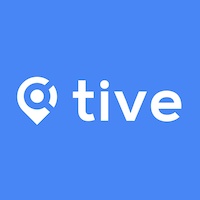Visibilidad de la IA: cómo hace que las cadenas de suministro pasen de ser reactivas a predictivas

August 1, 2025
October 24, 2025
x min read

Nadie se propone gestionar una cadena de suministro reactiva. Simplemente sucede. Está claro que estás haciendo tu parte. Tienes sensores en todo, paneles de control que supervisan cada movimiento y alertas en tiempo real que suenan constantemente.
Sin embargo, de alguna manera, aún no sabes que tu envío refrigerado se está cocinando hasta que esté cocido. O que tus aparatos electrónicos estén atascados en la aduana hasta que, bueno, estén atascados.
Esta es la diferencia: el seguimiento no es una predicción, y saber dónde están tus cosas en este momento no te indica qué es lo que está a punto de salir mal. Eso es solo la mitad de la batalla.
Sin embargo, cuando la visibilidad de la IA entra en escena (al ingerir todas esas lecturas de temperatura, señales de ubicación y tiempos de tránsito), puedes darles sentido antes de que ocurra un desastre.
La visibilidad de la IA detecta las cosas que los humanos no ven. Por ejemplo, por qué algunas rutas siempre hacen calor los martes por la tarde, o por qué determinados transportistas suelen hacer entregas tarde en determinadas regiones. Conecta puntos entre los patrones meteorológicos, los datos de tráfico y el rendimiento de los equipos para detectar los riesgos y, al mismo tiempo, hacer algo al respecto.
La pregunta entonces es: ¿cómo se transforma toda esa supervisión reactiva en inteligencia proactiva?
De lo reactivo a lo predictivo: un nuevo imperativo de la cadena de suministro
Ya sea que estés envío de productos farmacéuticos, alimentos especiales, o electrónica de alto valor, lo que está en juego no hace más que aumentar.
Se producen importantes interrupciones en la cadena de suministro cada 3,7 años como un reloj, lo que podría evaporar el 45% de las ganancias anuales. Sin embargo, de alguna manera, 77% de las empresas aún no han integrado la IA en sus operaciones.
La brecha entre ganadores y perdedores también se está ampliando rápidamente. Empresas que utilizan la IA en sus cadenas de suministro ya están reduciendo los costos logísticos en un 20% y aumentando los ingresos en un 10%, no por arte de magia, sino viendo los problemas antes de que se conviertan en problemas.
Mientras tanto, quienes siguen jugando al juego de ayer con las cadenas de suministro reactivas corren el riesgo de extinguirse. Cuando la IA puede predecir las interrupciones mientras otros siguen descubriéndolas, «esperar y ver qué pasa» se convierte en «esperar y perder».
Datos de calidad: el combustible para una predicción precisa
Sin embargo, hay un inconveniente: la visibilidad de la IA es tan inteligente como los datos que le das. ¿Y la mayoría de las empresas? Trabajan con basura.
Un asombroso 81% de los profesionales de la IA admiten que sus organizaciones no pueden gestionar correctamente la calidad de los datos. Peor aún, las empresas capturan solo el 56% de sus datos útiles, y las tres cuartas partes de esa cantidad son basura redundante.
Haga los cálculos: eso deja el 23% de los datos correctos reales para que la IA pueda trabajar con ellos. Cuando piensas que es como esperar que un chef experto haga magia con ingredientes caducados, no es de extrañar que las predicciones fracasen.
Por otro lado, las empresas con datos limpios e integrados obtienen una eficiencia un 20% mayor y responden a las interrupciones un 30% más rápido que las que intentan crear algo de la nada con datos basura.
Toda la IA del mundo no puede predecir nada si está aprendiendo de los errores del pasado, así que deje de tratar los datos como un problema de TI y empiece a tratarlos como el oxígeno de la cadena de suministro.
La IA y el aprendizaje automático convierten la visibilidad en previsión
Seguimiento en tiempo real le indica que su envío está en Chicago. La inteligencia artificial indica que llegará el jueves a las 14:47 horas, a menos que el sistema de tormentas que se aproxime retrase la salida del puerto el martes, en cuyo caso, será el viernes a mediodía.
¿Ves la diferencia?
El aprendizaje automático no solo calcula números, sino que conecta puntos que los humanos ni siquiera pueden ver. Los patrones meteorológicos, los datos de tráfico, los retrasos históricos y el rendimiento de los equipos se procesan de forma simultánea para predecir lo que realmente va a suceder. Las empresas que utilizan estos sistemas tienen redujo los errores de previsión en un 50% y reducir el inventario en un 30% sin tocar los niveles de servicio.
¿El verdadero poder? Obtener respuestas antes de hacer preguntas. La IA señala que los proveedores se ralentizan antes de que esto genere desabastecimientos. Detecta los picos de demanda antes de que las estanterías se vacíen. Y en lugar de gestionar la crisis actual, estás previniendo la de la próxima semana.
Mitigación proactiva de riesgos y resiliencia
Por último, pero no por ello menos importante, la prevención lo es todo cuando las interrupciones pueden acabar con su empresa.
La visibilidad de la IA se transforma visibilidad de los envíos en tiempo real de una herramienta de seguimiento a un sistema de alerta temprana. ¿Esa unidad de refrigeración muestra patrones de temperatura extraños? La IA detecta la señal del fallo 12 horas antes de que las vacunas se estropeen. ¿Se está formando un huracán en el Atlántico? Su sistema ya está desviando los envíos de la próxima semana a través de puertos alternativos.
No es ciencia ficción—59% de las inversiones en visibilidad ahora se centran en la prevención de pérdidas porque las empresas están cansadas de descubrir los daños en el momento de la entrega. La IA detecta esos micropatrones en los datos de los sensores que indican que hay problemas en el futuro, ya se trate de lecturas de choque inusuales que sugieren robos o de picos de humedad que predicen daños en los productos.
La recompensa es una cadena de suministro que se dobla en lugar de romperse y resiliencia integrada en cada decisión.
Visibilidad impulsada por la IA en acción: aplicaciones y beneficios de la industria
Entonces, ¿qué aspecto tiene la visibilidad de la IA cuando la goma choca con la carretera? Cada sector tiene su propio escenario de pesadilla y sus propias formas de utilizar la inteligencia predictiva para convertir esas pesadillas en pequeños inconvenientes.
- Productos farmacéuticos: ¿La temperatura tiene una tendencia extraña en la tercera hora de un viaje de 48 horas? La IA detecta esos patrones sutiles y alerta a los equipos cuando aún están a tiempo de hacerlo ahorre ese valioso envío de vacunas. Nadie quiere explicar por qué un medicamento que salva vidas se convirtió en una sustancia pegajosa cara.
- Comercio minorista y comercio electrónico: Walmart alimenta más de 200 variables por producto en su IA, logrando tasas de existencias del 99% y reduciendo el exceso de inventario de 1500 millones de dólares. Mientras tanto, los actores del comercio electrónico utilizan la visibilidad de la IA para prometer plazos de entrega de hasta una hora y, de hecho, se ven perjudicados.
- Transporte y logística: ORION AIR DE UPS calcula 30 000 rutas por minuto, lo que permite ahorrar 38 millones de litros de combustible al año. Los camiones inteligentes de DHL reduce los tiempos de entrega en un 25% mediante el redireccionamiento en tiempo real. Además, la adaptación de cargas basada en inteligencia artificial ayuda a los transportistas a llenar el espacio, gestionar la capacidad y reducir los costos en un 15%.
- Fabricación: Las fábricas modernas utilizan la visibilidad de la IA para detectar la escasez de componentes semanas antes de que lleguen a la línea de producción, basándose en los patrones de pedidos, los riesgos regionales y la alineación cósmica. Además, 70% de los fabricantes ahora confíe en el mantenimiento predictivo basado en la inteligencia artificial para mantener los equipos en funcionamiento.
- Productos frescos: A los arándanos no les importan tus problemas logísticos—se estropean, te guste o no. Visibilidad de la IA ayuda a producir cargadores prediga el momento óptimo desde la cosecha hasta el punto de venta, señale las rutas propensas a los picos de temperatura e incluso prediga qué centros de distribución moverán el inventario más rápido.
En resumen: su cadena de suministro no puede permitirse mantenerse reactiva
Las compañías farmacéuticas que se dan cuenta de los problemas de temperatura antes de que las vacunas se echen a perder, los minoristas que alcanzan los precios de las existencias del 99% y los transportistas de productos que mantienen las bayas frescas tienen una cosa en común: dejaron de aceptar sorpresas como parte de sus negocios. La visibilidad de la IA les dio algo mejor que la esperanza. Les dio tiempo. Es hora de evitar la huelga portuaria. Es hora de arreglar la unidad de refrigeración. Es hora de buscar otro proveedor. Ahí está todo el juego: no ser más inteligente o tener más suerte, sino simplemente ver lo que viene.
En Cinco, nos cansamos de escuchar la misma historia: «Si tan solo lo hubiéramos sabido dos horas antes». Así que creamos rastreadores que alimentan los sistemas de IA datos fundamentales necesitan detectar los problemas a tiempo, ya sea robo de carga patrones en sus rutas habituales, fluctuaciones de temperatura que causan problemas o retrasos que se propagan en cascada por su red. Nuestros clientes envían de todo, desde medicamentos que salvan vidas hasta productos frescos, y todos necesitan lo mismo: no tener sorpresas.
¿Quiere saber qué hará su cadena de suministro mañana en lugar de saber qué hizo ayer? Empieza a usar Tive hoy.


